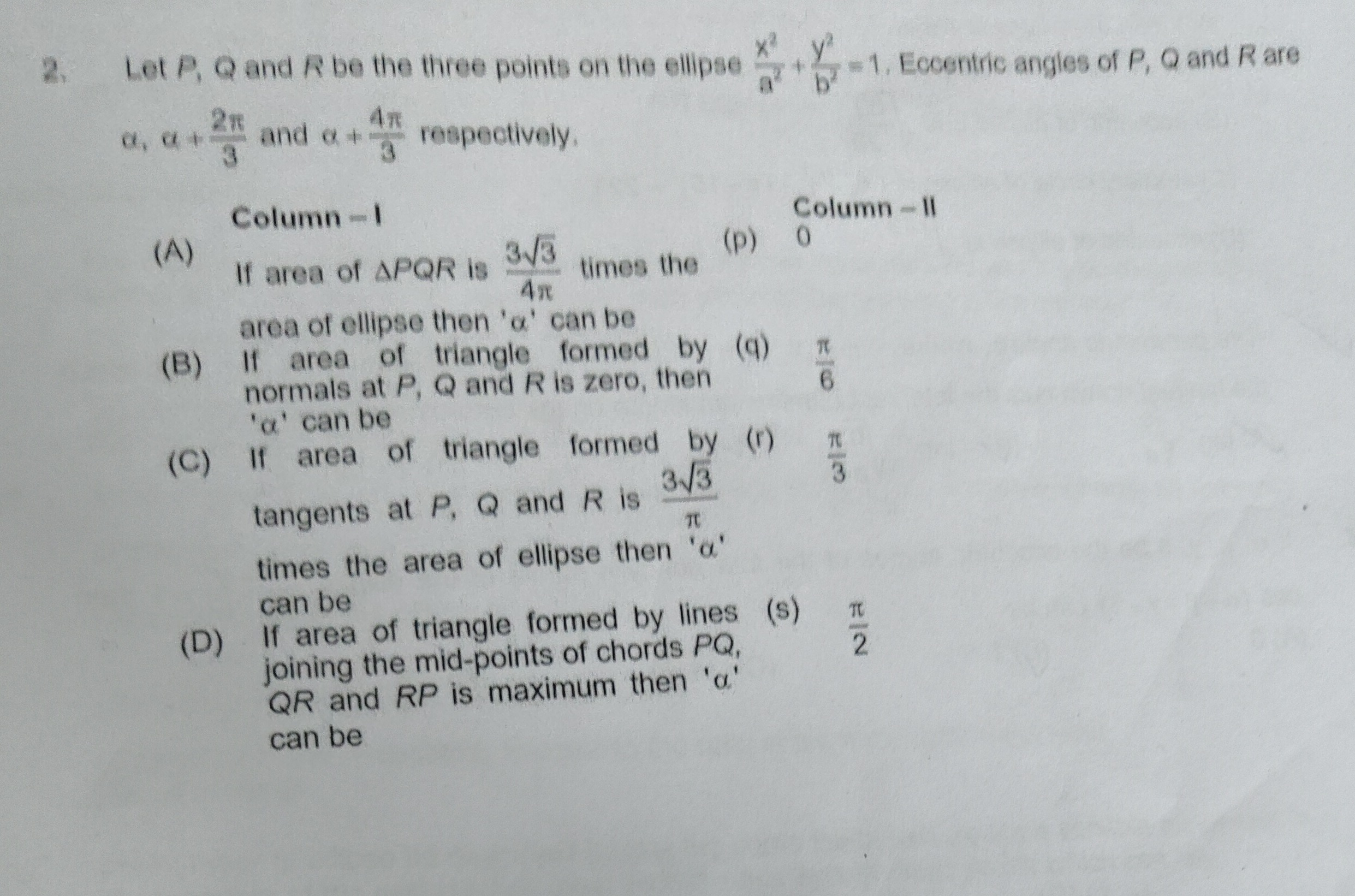Question
Question: Let $P$, $Q$ and $R$ be the three points on the ellipse $\frac{x^2}{a^2} + \frac{y^2}{b^2} = 1$. Ecc...
Let P, Q and R be the three points on the ellipse a2x2+b2y2=1. Eccentric angles of P, Q and R are α, α+32π and α+34π respectively.

(A) If area of △PQR is 4π33 times the area of ellipse then 'α' can be
(B) If area of triangle formed by normals at P, Q and R is zero, then 'α' can be
(C) If area of triangle formed by tangents at P, Q and R is π33 times the area of ellipse then 'α' can be
(D) If area of triangle formed by lines joining the mid-points of chords PQ, QR and RP is maximum then 'α' can be
A-p, B-r, C-q, D-s
Solution
The problem is a matching question involving properties of points on an ellipse with specific eccentric angles.
Part (A): Area of △PQR The area of △PQR with eccentric angles α, α+32π, α+34π is A△PQR=433ab. The area of the ellipse is Aellipse=πab. The ratio is AellipseA△PQR=πab433ab=4π33. This ratio is constant and independent of α. Therefore, the condition is always met. Any α can be a valid answer. Matching with (p) α=0.
Part (B): Area of triangle formed by normals at P, Q and R is zero. The normals at P,Q,R are concurrent if α+(α+32π)+(α+34π)=nπ for some integer n. This simplifies to 3α+2π=nπ, or 3α=(n−2)π. Let m=n−2, so α=3mπ. Checking the options:
- (p) α=0: 0=mπ/3⟹m=0. Valid.
- (r) α=π/3: π/3=mπ/3⟹m=1. Valid. So, α can be 0 or π/3. Matching with (r) α=π/3.
Part (C): Area of triangle formed by tangents at P, Q and R The area of the triangle formed by tangents at points with eccentric angles θ1,θ2,θ3 is A=ab∣tan(2θ2−θ1)tan(2θ3−θ2)tan(2θ1−θ3)∣. Here, 2θ2−θ1=3π, 2θ3−θ2=3π, 2θ1−θ3=−32π. Atangents=ab∣tan(3π)tan(3π)tan(−32π)∣=ab∣(3)(3)(3)∣=33ab. The ratio to the ellipse area is πab33ab=π33. This ratio is constant and independent of α. Matching with (q) α=π/6.
Part (D): Area of triangle formed by lines joining the mid-points of chords PQ, QR and RP is maximum. The triangle formed by the midpoints of chords PQ,QR,RP has an area that is 1/4 of the area of △PQR. Area(△MPQMQRMRP) = 41×433ab=1633ab. This area is constant and independent of α. Thus, it is always maximum. Matching with (s) α=π/2.
The matches are: (A) → (p), (B) → (r), (C) → (q), (D) → (s).
